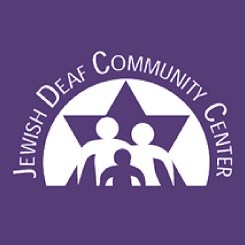Please note: This article was written with the permission of the person involved.
 Over the past four months, I had the opportunity and privilege to serve as the interpreter and tutor for a deaf student taking two graduate level courses in Biblical Hebrew at a local seminary. I thought JDCC subscribers would enjoy reading about some of the techniques the student and I developed to make this a successful experience.
Over the past four months, I had the opportunity and privilege to serve as the interpreter and tutor for a deaf student taking two graduate level courses in Biblical Hebrew at a local seminary. I thought JDCC subscribers would enjoy reading about some of the techniques the student and I developed to make this a successful experience.
The purpose of the course was to teach students how to read and translate from Biblical Hebrew into English. Students were not required to speak Hebrew or to write their own sentences (although they did learn to copy Hebrew letters and words).
Before the course began, the student and I met to study the Israeli Manual Alphabet. We worked on matching each ISL handshape to the written Hebrew letter, letter name, and sound. We also developed our own system for transliteration (writing Hebrew with the English alphabet). Most letters were easy; lamed became “L”, mem became “M”, etc. Some letters were more tricky such as alef “)” and ayin”(“.
During the semester, the teacher spoke mostly in English, writing Hebrew words on the blackboard. When the teacher was discussing single words or three letter roots, I would represent the Hebrew letters using the ISL alphabet. [I also developed a system for representing the vowels/”pointing” system, although space does not allow me to describe it fully here.] When the teacher read full sentences aloud, I would transliterate phonetically, using the ASL alphabet. I would not translate the Hebrew myself, as I knew the professor would include that as part of his explanation.
During tutoring sessions, the student and I would review material from class and work on homework exercises and text translations together. We worked on translating directly from the written Hebrew or from a transliteration transliteration on one side, and English translation/ meaning, and grammatical information (noun, verb, plural, male/female, preposition, etc.) on the back.
The student also came up with some interesting ways to study and memorize the vocabulary. These were pneumonic devices, not recommended for conversational use, as they looked a lot like “S.E.E.” signs! For example, to help remember the various prepositions, the student would sign “be (IN, with a “B” handshake), “l’ (TO, with an “L” handshape) and “min” (FROM, with an “M” handshake). We also used principles from ASL, such as setting up pronouns in space (you, me, him, they) and then spelling out the appropriate Hebrew pronoun endings in the appropriate point in space. (ee = ME/MY, o = HIM/HIS, cha = YOU/YOUR, etc.) The student said that my anecdotes and examples of how various vocabulary and grammar was used in common phrases helped with retention.
Luckily, Hebrew and ASL work well together. Sometimes it was easier to explain the meaning of a Hebrew concept through ASL than it was to find the equivalent in English. For example, Hebrew has a direct object marker, “et’. There is no word for this concept in English. In ASL, we were able to sign a “B” handshape, palm up, in the direction of the referent, so this concept became easy to grasp.
If any of the readers are planning to study Hebrew (or Interpret a Hebrew course), I would be happy to share additional information. If anyone else has techniques to share about their own Hebrew learning experiences, please write to me, via e-mail at [email protected].




